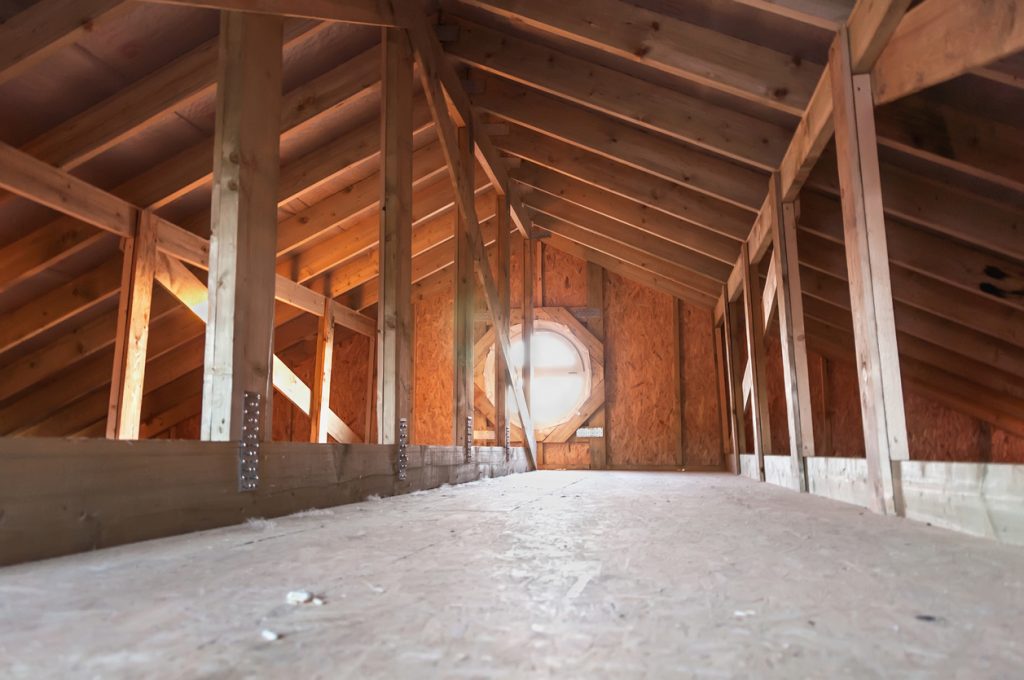Do Loft Boards Need To Be Raised?
The official answer as to whether loft boards need to be raised when boarding a loft, from a professional point of view, is almost always yes, because of how most lofts are designed and the way the insulation sits.
That latter point is important, because it’s where building regulations play a part. According to regulations, loft insulation depth must be at least 270mm, which is usually higher than most loft floor joists. So when you try and board directly onto these joists, you’re going to end up squashing the insulation down, which in turn means your insulation won’t pass a building control inspection. It also makes your insulation less effective when it has been condensed down under boards, so you’re in a lose-lose situation.
This is why it always makes sense to use experts for loft boarding, as you get professional work done that accounts for the industry standards and best practices that you might otherwise be unaware of.
What can you do to retain the effectiveness of your loft insulation? Well, raised loft boarding is the common solution. Let’s take a look at what this is in more detail.

What is raised loft boarding?
We’ve already established that squashing your insulation down is a bad idea, so the only option is to build over the top of it. This is where raised loft boarding comes in handy.
A subframe is created perpendicular to your joists, leaving room over the top of your insulation material and allowing for boards to be placed on the top. It’s a simple and effective way of turning your loft into a usable storage space while still complying with building regulations.
How does it compare with standard loft boarding? See our breakdown of this below.
Standard loft boarding vs raised loft boarding
How are they fixed into place?
Standard – The standard approach will see someone put loft boards straight onto joists in your loft, fixing them flat across the floor even if it means squashing insulation material down.
Raised – Raised loft boarding is fixed to the platform created by the subframe. This subframe is a series of adjustable beams that are placed on top of your joists.
How do they impact insulation?
Standard – Unless you already have a very shallow level of insulation, standard loft boarding is likely to squash your insulation, reducing its effectiveness.
Raised – Raised loft boarding doesn’t touch your insulation. In fact, there is often a small gap for ventilation over the top of your insulation (we’ll talk more about this later).
How safe are they?
Standard – While standard loft boarding is safe enough when done correctly, if someone is recommending it when it squashes your insulation, you might need to consider what else they’re not paying attention to.
Raised – Raised loft boards use a strong subframe on the top of your joists, so are just as safe as standard boarding options. The subframe is put in place across your joists and can be designed to match different spacings between joists.
How much do they cost?
Standard – Standard loft boarding, given that it only involves the boards, is usually always cheaper. But be careful with quotes that seem too good to be true, as a company may not be using quality materials.
Raised – Raised loft boarding costs a little more, but what you spend on proper boarding that meets building regulations, you will surely save on energy bills. This is because squashed insulation is around half as effective, so your house will lose more heat. Plus, with a reputable company carrying out loft boarding, you may well save money if you have a range of work carried out all at once, such as loft hatch and loft ladder installation.
There’s one other very important factor in loft boarding, something you might not be aware of as a potential issue. Let’s talk about ventilation and dampness in your loft, along with how boarding the loft impacts this.
Ventilation & Damp
Put simply, any moisture and dampness in your loft is a bad thing. Once condensation has built up, it can soak into the ceiling below your loft, as well as into your wooden joists, causing them to lose structural integrity. This means they’ll eventually need to be replaced and that can be a very costly job.
When you board over your insulation, it’s always a good idea to have a little extra room to allow it to breathe. The extra airflow will keep your insulation dry and avoid any damp issues – another good reason to opt for raised loft flooring.
Want to make a dry, secure storage space out of your loft? Don’t risk your safety or the thermal efficiency of your home – always use the professionals. At Loft Storage Rooms, we offer professional loft boarding and our team has the years of experience needed to do the job to the highest standards.
We operate throughout most of the UK, including London, Harlow and Cambridge, so give us a call today and talk to our team of experts about your loft boarding requirements, or fill in our quick form below.
